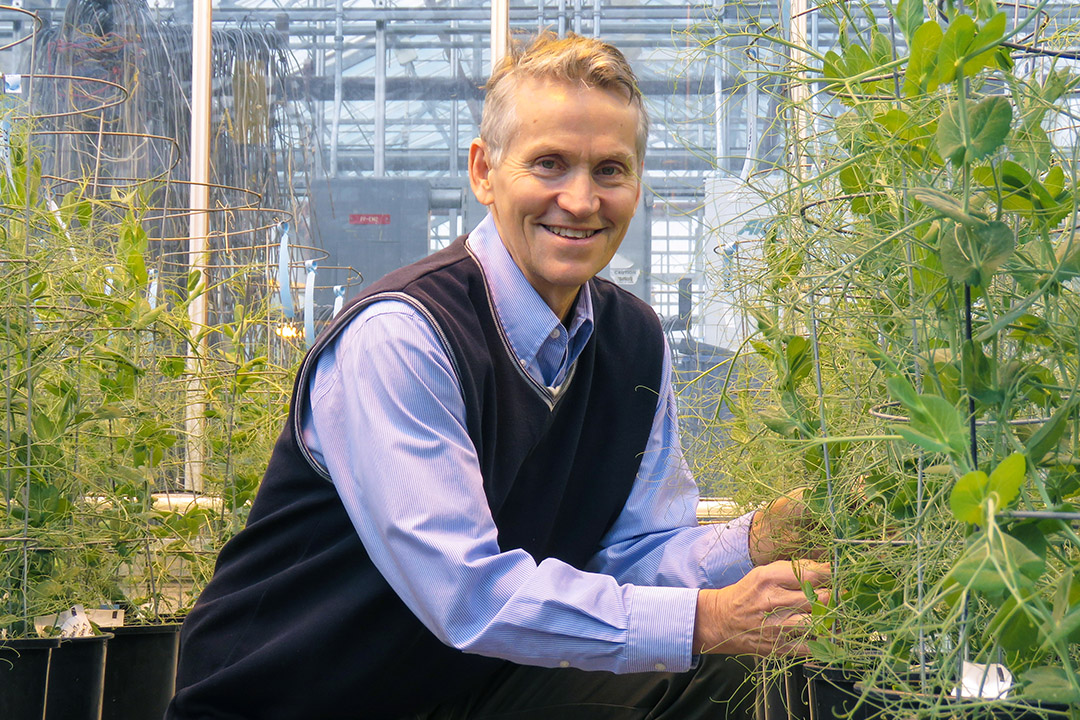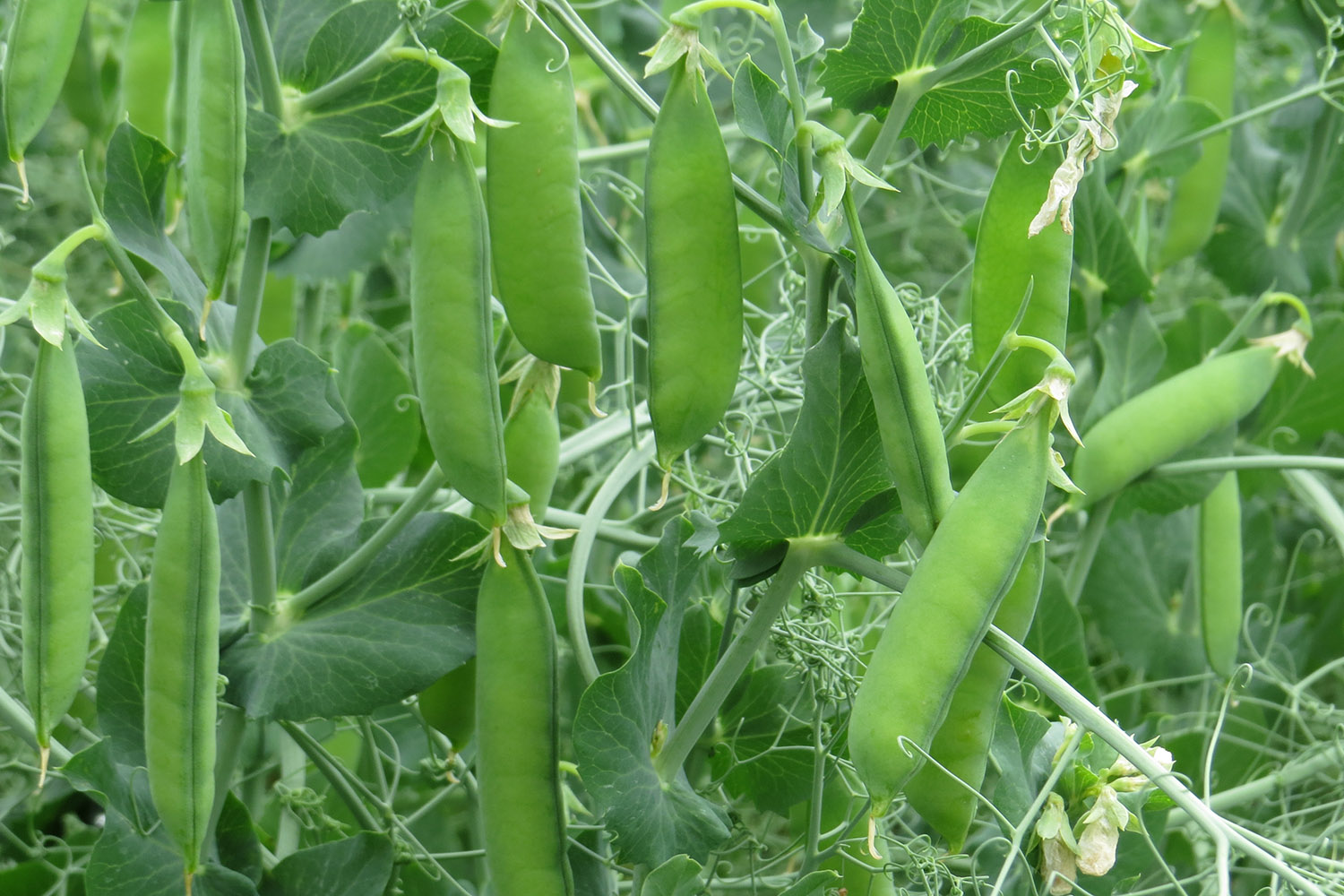
All we are saying is give peas a chance
As a passionate proponent of plant-based proteins for more than two decades, researcher Dr. Tom Warkentin (PhD) understands better than most the recent rapid rise in popularity of pulse crops.
By James ShewagaAn expert in plant breeding and genomics, Warkentin has spent 21 years at the University of Saskatchewan (USask) improving crop varieties, specializing in pea production. His recent research—including helping an international team crack the pea genome—has earned added attention as consumers trend towards beyond-meat burgers and protein shakes powered by plant-based proteins from environmentally friendly pulse crops like peas and lentils touted for their health benefits and affordability.
“It is exciting and interesting,” said Warkentin, the Ministry of Agriculture Strategic Research Program Chair in Field Pea Breeding and Genetics at USask. “We hear more and more in the media these days about plant-based proteins from two points of view: one, nutritional, and two, environmental. Plant-based proteins have a lower carbon footprint than animal-based proteins, so those trends are helping drive expanded interest in plant-based proteins—and pea is one of them.”

Warkentin was one of 45 researchers from around the world who teamed up to successfully sequence the pea genome in a six-year project that concluded in 2019, a research breakthrough that could help improve crop quality, diseases resistance and protein levels.
“It was good to be part of that research group and it will be a great resource over the next decade for our community that works on pea and other legume crops,” said Warkentin. “From a Saskatchewan point of view, in our plant breeding work, we have various traits that we target, such as increasing protein concentration and improving disease resistance. So, by knowing more about the genome sequence, it helps us plan our research.”
Warkentin and his colleagues in the Crop Development Centre (CDC) conduct conventional—not genetically-modified—plant breeding, as CDC researchers continually work to improve the majority of crop types grown throughout the province and across Western Canada.
“More than 80 per cent of peas grown in Western Canada are varieties that we developed here (at USask), so our research certainly has had an impact,” said Warkentin, who has been involved in releasing dozens of new pea varieties since starting at USask back in 1999. “We have been doing plant breeding at the university in collaboration with farmers and the provincial government for decades to improve traits, and those varieties are continually being brought to the marketplace.”
While Western Canada remains best-known for producing cereal crops like wheat, oat and barley, and oilseeds like canola, USask research has helped make pulse crop production a perfect fit for the Prairie climate. With the demand for pulses on the rise to help feed a growing global population, Warkentin said Canada is well-positioned to increase plant-based protein production in the coming years.
“Canada has been the leading producer of pea in the world in the last decade and is the leading producer of lentil in the world,” said Warkentin, who employs the country’s only synchrotron to help conduct research at the Canadian Light Source facility on the USask campus. “Pea and lentil are two widely grown pulse crops that are well-adapted to conditions on the Canadian Prairies. Farmers on the Prairies have 30 years of history of growing pea and lentil on a substantial scale, and these crops fit well in the crop rotations that farmers use.”
One of Warkentin’s current research projects—a five-year study backed by a $2.5-million grant from the Saskatchewan Ministry of Agriculture—is designed to increase protein content in yellow peas, making them even more attractive to companies using pea protein as an ingredient. And for producers, adding pulses to annual crop rotations helps make for healthier soil, saves money on fertilizer, and is more environmentally friendly.
“You don’t need to put nitrogen fertilizer on pulse crops because they make their own,” said Warkentin. “And nitrogen fertilizer is made from fossil fuels, so by growing pulse crops and not putting on nitrogen fertilizer, you are having some benefit environmentally because you are using fewer fossil fuels. So that is the climate change angle.”

